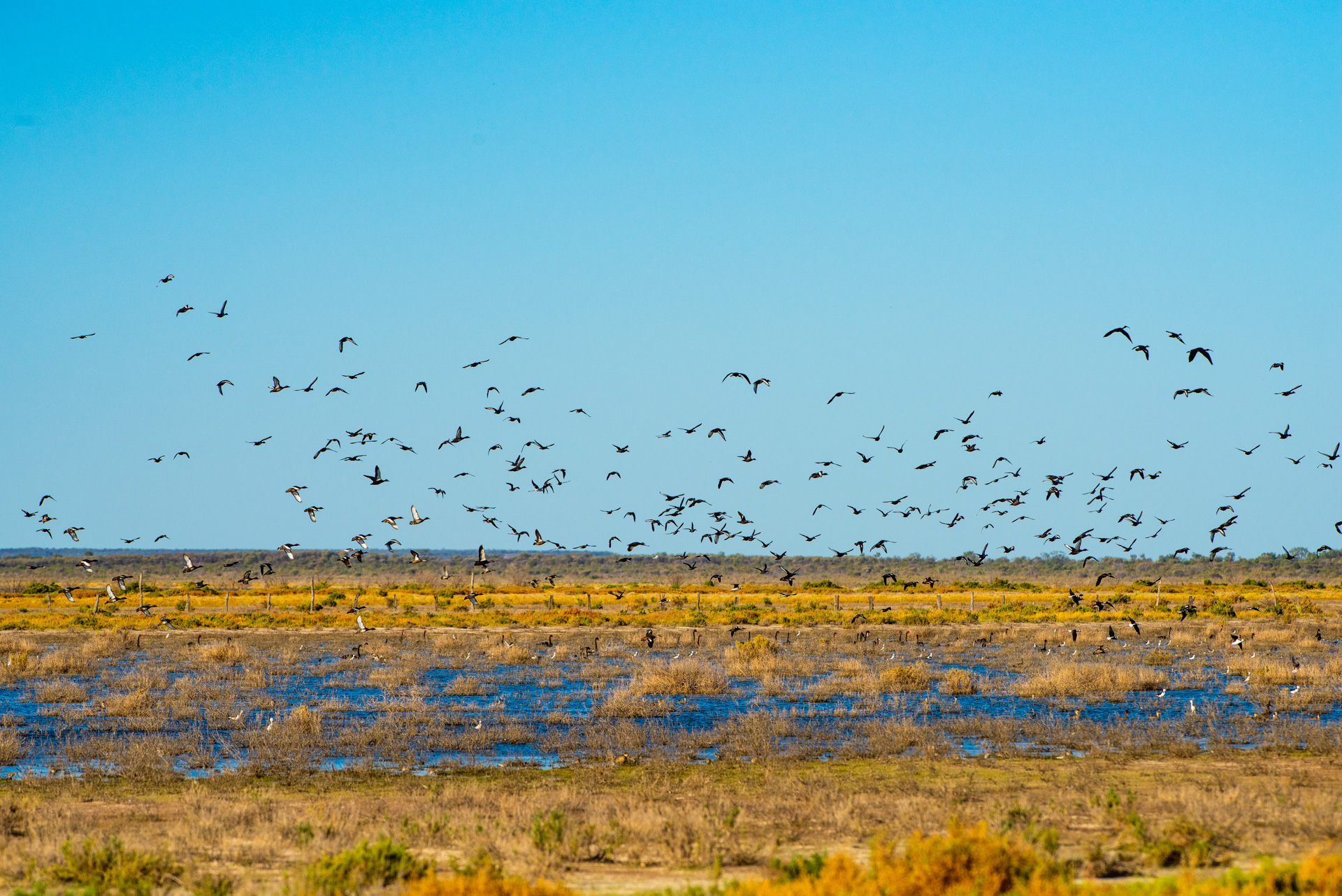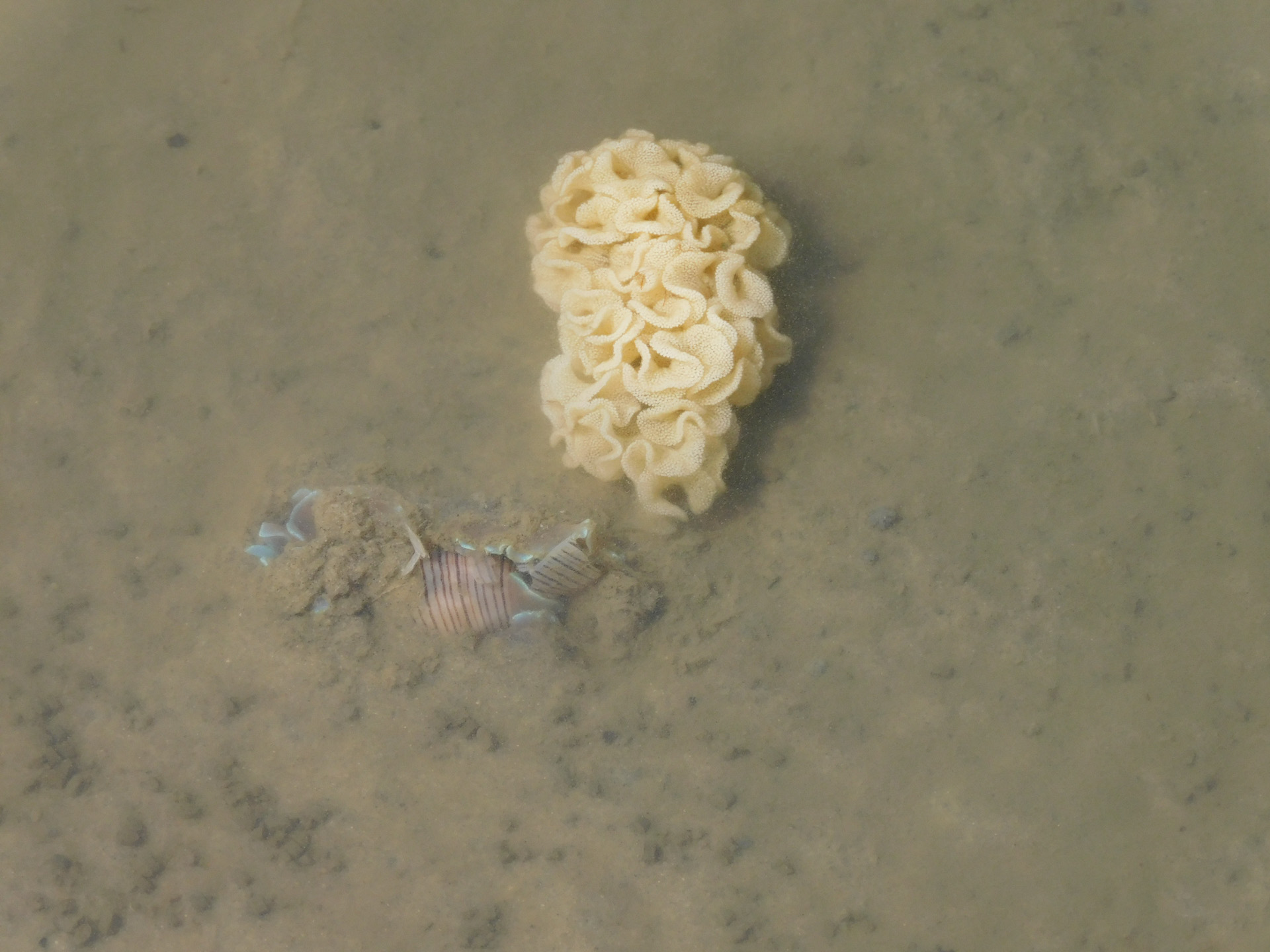|
|
Reproduction and breedingReproduction is the process by which organisms replicate themselves[5]. It is fundamental to life cycles. Two major types of reproduction include, 1. asexual reproduction (dividing cells or polyps) which is primarily found in prokaryotes and protists but can also be found in larger organisms such as corals[2] and 2., sexual reproduction which occurs in most organisms with more than one cell[2][1]. Breeding is the sexual reproduction between male and female in animals and plants that results in offspring. Animals can migrate over great distances to breed as seen in many fish, turtles, whales and migratory shorebirds or move over shorter distances individually or by forming aggregations. Breeding in colonies is a normal breeding strategy for many waterbird species.
Many aquatic animals, including fish, invertebrates and frogs reproduce through spawning process, where eggs and sperm are released, often into the water. The nature of the spawning differs depending on the species involved and the surrounding habitat. An example of an iconic mass spawning event is the annual coral and other marine invertebrates spawning on the Great Barrier Reef. Over only a few nights each year, the sea fills with the simultaneous release of eggs and sperm triggered by sea temperatures and the moon cycle. However, not all corals spawn during this annual event. Pelagic larval dispersal (the spread of larvae from a spawning source to a settlement site) by ocean currents such as eddies surrounding coral reefs influences the retention of coral larvae within their local reef ecosystem or further away. Many marine fishes and invertebrates depend on larval dispersal to connect and replenish their populations.[6]. Rainfall, river flows and inundation of floodplains are important drivers of reproduction and recruitment in species such as barramundi and prawns. For example in the Gulf of Carpentaria, connections between upstream and downstream wetland habitats, food availability and freshwaters are essential for juvenile fish to live and grow out[4]. Major flood events can also give rise to the extensive breeding events seen in the Boom and Bust cycle in the arid interior of Queensland. The majority of aquatic plants are flowering plants that sexually reproduce by flowering followed with the production of seed. The flowers are usually produced above water, where they can be pollinated by insects, just as terrestrial ones are. Some aquatic plants produce flowers beneath the water surface. In these instances, the seeds are capable of floating downstream and a few species do not produce flowers at all, preferring to reproduce by purely asexual means with rhizomes, turions, and plant fragments. Recruitment is often confused with breeding, but recruitment includes the entire life history process by which new individuals are added to a population, from birth to maturation or by immigration[3]. Additional linksBreeding and moult in migratory shorebirds Managing for ecological requirements of breeding and moulting for waterbirds Life cycle of Golden Perch Macquaria ambigua Life cycle of Hyrtl's catfish (Neosilurus hyrtlii) Life cycle of Rainbowfish (Melanotaenia splendida) Life cycle of eel-tailed catfish (Tandanus tandanus) Beach-nesting Birds - BirdLife Australia References
Last updated: 23 October 2023 This page should be cited as: Department of Environment, Science and Innovation, Queensland (2023) Reproduction and breeding, WetlandInfo website, accessed 18 March 2024. Available at: https://wetlandinfo.des.qld.gov.au/wetlands/ecology/processes-systems/breeding/ |

 — Department of Environment, Science and Innovation
— Department of Environment, Science and Innovation



